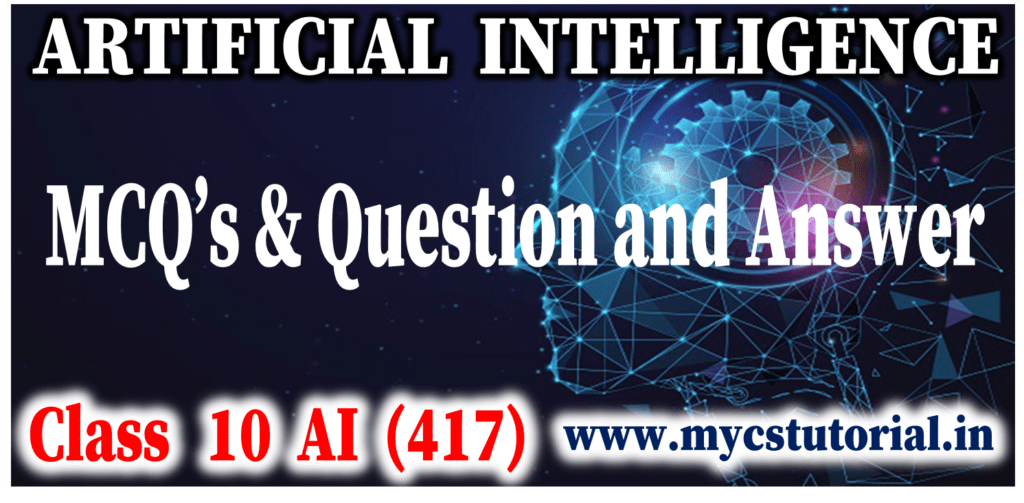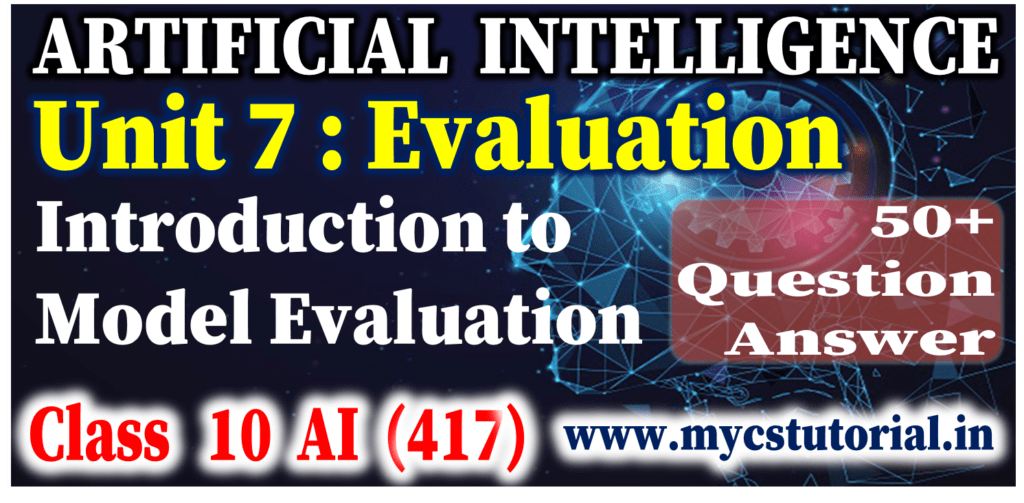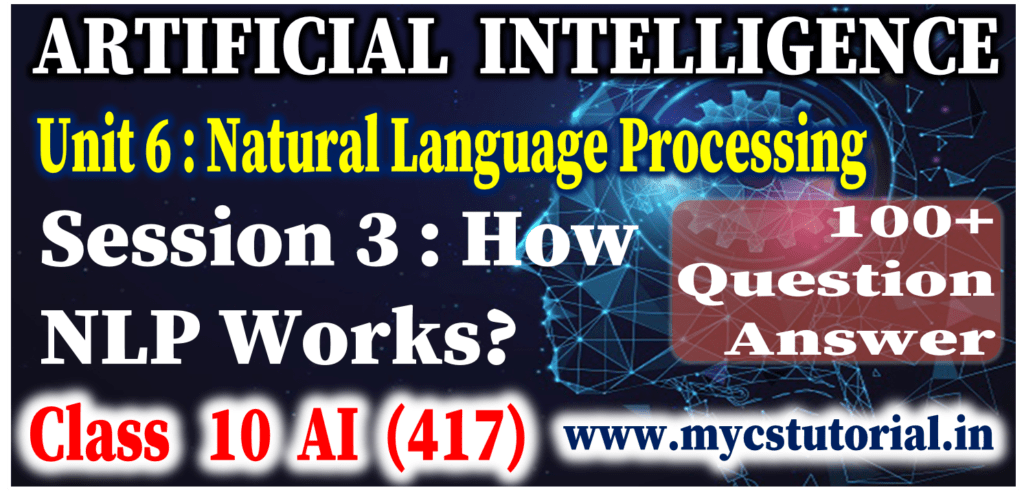26. How NLP is useful in (a) Healthcare and (b) Diagnostics? (2 Marks)
Answer: A well trained NLP algorithm can interpret and extract disease conditions from the words spoken by a patient. NLP application can predict fatal diseases on the basis of digital health records.
Diagnostics reports and medical notes can be summarised to create patient health profile quickly and correctly. A good NLP algorithm can help in finding new drugs on the basis of clinical trials findings.
27. How NLP is useful in Education and Training? (2 Marks)
Answer: NLP has greater scope of application in Education and training field. It is useful in
(a) Develop language skills by guiding on grammatical mistakes, paragraph & essay writing, and sentence framing.
(b) Developing content summaries like list of main points, keywords, glossaries.
(c) Providing feedback after analysis and assessment of group discussion.
(d) Developing speech skills
(e) Developing new instructional material
(f) Facilitate free and affordable education with lesser instructor’s intervention, etc.
28. What is chatbot? (1 Marks)
Answer: A chatbot is an application that can perform logical text-based chat or simulate verbal communication with a person.
29. In which algorithm chatbot application is works? (1 Marks)
Answer: A chatbot application can works on either a Rule based algorithm or Machine learning algorithm.
30. In what ways a chatbot interact with human or users? (1 Marks)
Answer: A chatbot application can interact with human or user through its interface, which is either text oriented or voice oriented or both.
31. On the basis of service, give the example of two bots? (1 Marks)
Answer: News bot, Personal fitness bot, Banking bot, Weather bot, Travel assistant bot, Scheduler bot.
32. On the basis of functionality, how many types of bots? (1 Marks)
Answer: On the basis of the functionality, there are two types of bots –
(i) Rule-based or Script bot
(ii) AI-based smart bot.
33. What is Rule-based or Script bot? (1 Marks)
Answer: Rule-based or Script bot has all the intelligence built into it and it cannot think beyond it. It has limited intelligence which functions around a set of rules which are scripted in its logic.
34. Write two advantages of Rule-based or Script bot? (2 Marks)
Answer: Advantages of Rule-based or Script bot are
(i) It can respond to a specific set of command.
(ii) Inexpensive to deploy
(iii) It is very useful in user-specific environment where limited functionality is required.
35. List the four use cases where Rule-based or Script bots are used? (2 Marks)
Answer: Some common use cases are :-
(i) Inter-departmental interactions
(ii) Service or product specific
(iii) For technical assistance and troubleshooting
36. Write four characteristics of Rule-based or Script bot? (2 Marks)
Answer: Characteristics of rule-based chat bot are
(i) Works on simple rule (ii) Easy to develop and deploy.
(ii) It does not go beyond the intelligence built into their script.
(iv) It can be easily integrated with the existing systems.
(v) It can not perform language parsing, tokenising and processing.
37. What is AI-based smart bot? (2 Marks)
Answer: AI-based smart bot works on Machine Learning algorithm with Natural Language Processing capability. They try to work like human brains. It can make sense of the conversation in terms of context, reference and intention.
These bots have capability to learn by experience and become more accurate.
As these bots interact with more and more persons with variety in the nature of interaction, their intelligence evolves. The Machine Learning algorithm learns from the interactions and make NLP functionality more effective. It is useful in building public relation by providing enriched customer experience.
38. Write four characteristics of Smart bots. (4 Marks)
Answer: Four characteristics of Smart bots are –
(i) Due to Machine Learning algorithm and NLP, smart bots have wider and versatile functionality.
(ii) Smart bots learn from more data, i.e. user interactions and become more intelligent in their response.
(iii) Smart bots are capable of language processing.
(iv) Smart bots are re-usable and can be easily integrated with the existing systems.
(v) Smart bots integrate and work with larger databases, cloud storages and resources easily and efficiently.
39. How is a rule-based chatbot different from a smart bot? (4 Marks)
Answer: Rule-based chatbot vs Smart bot chatbot
(i) A rule based chatbot is based on rules or script while smart bot chatbot is based on Machine Learning and NLP.
(ii) A rule based chat bot can not think beyond the rule or script specified, while Smart bot chatbot can work beyond that capabilities due to ML and NLP.
(iii) A rule-based chatbot cannot update themselves by interaction, while smart bot chat box update them with more interactions and time.
(iv) Rule-based chatbot can not perform language processing while smart bot chatbot can do this.
40. What are stop words? Give example. (2 Marks)
Answer: A stop word is a commonly used word that a NLP has been programmed to ignore, both when indexing entries for searching and when retrieving them as the result of a search query.
Example :

41. Identify any 2 stopwords in the given sentence:
Pollution is the introduction of contaminants into the natural environment that cause adverse change. The three types of pollution are air pollution, water pollution and land pollution. (1 Mark) [CBSE Sample Paper 2021-22)
Answer: Stopwords in the given sentence are: is, the, of, that, into, are, and
By Anjeev Kr Singh – Computer Science Educator
Published on : March 23, 2022 | Updated on : June 30, 2023








